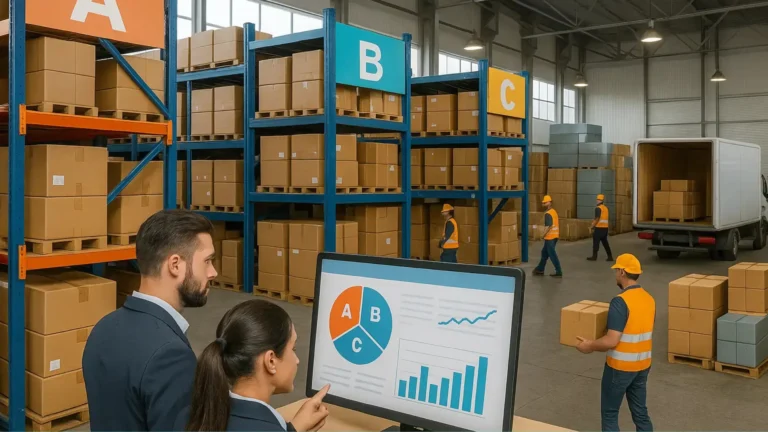
E-Procurement in Modern Supply Chains
In today’s fast-paced, digitally driven business landscape, e-procurement has emerged as a cornerstone of efficient and effective supply chain management. By leveraging technology to automate and streamline procurement processes, businesses can achieve significant cost savings, improve transparency, and enhance collaboration across their supply chains.
Understanding E-Procurement
E-procurement, or electronic procurement, refers to the use of web-based platforms and software to manage the procurement process. This includes activities such as:
- Electronic Requisitioning: Creating and submitting purchase requests online.
- Electronic Sourcing: Finding and evaluating suppliers through online marketplaces and platforms.
- Electronic Ordering: Generating and transmitting purchase orders electronically.
- Electronic Invoicing and Payment: Processing invoices and making payments online.
- Contract Management: Managing contracts electronically.
- Supplier Relationship Management (SRM): Facilitating communication and collaboration with suppliers online.
Benefits of E-Procurement in Modern Supply Chains
Increased Efficiency and Productivity
- Automation of manual tasks reduces processing time and minimizes errors.
- Streamlined workflows improve productivity and free up procurement professionals for strategic activities.
Reduced Costs
- Lower transaction costs through paperless processes and automated workflows.
- Improved negotiation and sourcing through online marketplaces.
- Reduced inventory holding costs through better demand forecasting.
Enhanced Transparency and Compliance
- Real-time tracking and monitoring of procurement activities.
- Improved audit trails and compliance with regulatory requirements.
- Reduced risk of fraud and errors.
Improved Supplier Relationships
- Streamlined communication and collaboration with suppliers.
- Improved supplier performance management through data analytics.
- Enhanced visibility into supplier capabilities and performance.
Improved Data Analysis and Decision-Making
- Centralized data storage and analysis for better spend visibility.
- Data-driven insights for informed procurement decisions.
- Improved demand forecasting and inventory management.
Faster Cycle Times
- Reduced processing time for purchase orders and invoices.
- Faster delivery times through efficient logistics management.
- Improved responsiveness to changing market conditions.
Enhanced Collaboration
- Improved collaboration between procurement, finance, and other departments.
- Seamless integration with other enterprise systems.
- Enhanced collaboration with suppliers and partners.
Sustainability
- Reduced paper consumption and waste.
- Improved tracking of sustainable sourcing practices.
- Reduced carbon footprint through optimized logistics.

Key Components of an E-Procurement System
Supplier Portals: Online platforms that allow suppliers to update their information, view orders, submit invoices, and communicate directly with buyers efficiently.
E-Auctions: Digital platforms used to conduct competitive bidding and reverse auctions, helping businesses secure better pricing and supplier terms online
E-Catalogues: Digital product catalogs enable buyers to browse items, compare features, and place orders conveniently through an organized and searchable interface.
Contract Management Systems: Electronic tools that streamline contract creation, storage, tracking, and renewal processes, ensuring better compliance and reduced legal risks.
Spend Analysis Tools: Software that analyzes procurement data to identify cost-saving opportunities, optimize supplier relationships, and improve overall purchasing decisions.
Integration with ERP Systems: E-procurement solutions integrate seamlessly with ERP platforms, ensuring real-time data sharing, improved accuracy, and streamlined procurement processes across departments.
Implementing E-Procurement
- Assess Current Processes: Evaluate existing procurement workflows, identify inefficiencies, and define clear goals for adopting e-procurement to streamline purchasing operations..
- Select the Right Platform: Choose an e-procurement solution that fits your organization’s needs, supports scalability, and integrates smoothly with your current enterprise systems.
- Develop a Change Management Plan: Communicate e-procurement benefits clearly, provide comprehensive employee training, and address concerns to ensure smooth adoption across all teams.
- Pilot the System: Launch a small-scale trial with selected users to test functionality, gather feedback, and resolve any implementation challenges before full deployment.
- Roll Out the System: Gradually expand e-procurement system use across departments, ensuring proper onboarding, support, and continuous feedback during each phase of rollout.
- Monitor and Optimize: Regularly assess system performance, gather user feedback, and make necessary adjustments to maximize efficiency and meet evolving procurement needs.
Conclusion
E-procurement plays a pivotal role in modern supply chains, enabling businesses to optimize their procurement processes, reduce costs, and enhance collaboration. By embracing e-procurement technologies, businesses can build more efficient, transparent, and sustainable supply chains that are better equipped to meet the challenges of today’s dynamic marketplace




